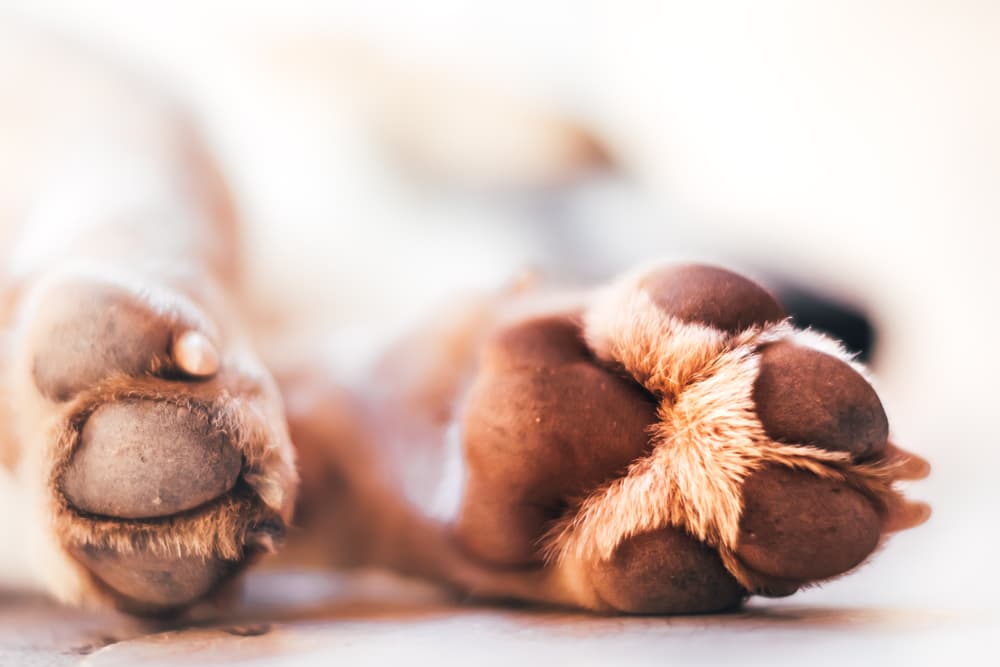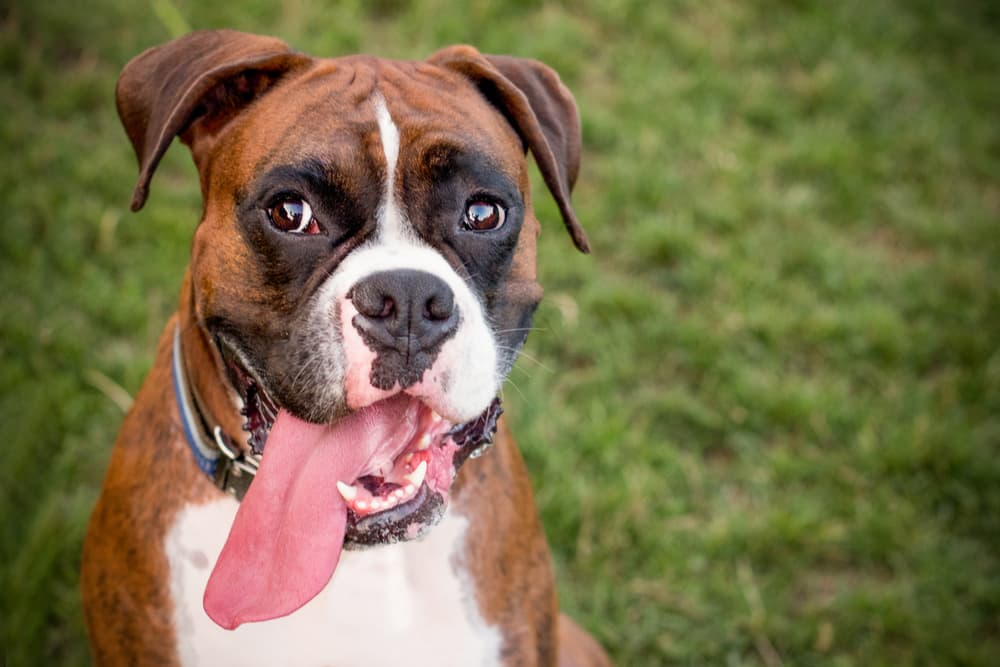Do Dogs Sweat?

Have you ever been outside with your dog on a hot summer day and found yourself wondering why they aren’t sweaty like you are? Most of us know that dogs pant to cool down, but is that the only way they regulate their body temperature?
Find out whether or not dogs sweat, how dogs keep themselves cool and valuable tips to prevent heat stroke in dogs below.
Do Dogs Sweat?

Yes, dogs do sweat—however, the where, when and how sweating occurs in dogs is somewhat different than in humans.
Humans are relatively hairless (except for our scalp); therefore, we sweat over our entire bodies. Without hair to trap the moisture, the sweat easily evaporates and cools us down rapidly.
In contrast, dogs are nearly entirely covered in fur. If dogs were to sweat into their coat, the moisture would become trapped, and it wouldn’t cool them down. Consequently, dogs have developed the ability to sweat in places where they do not have fur, namely their noses and paw pads. On warm days, your dog might leave wet paw prints behind on a walk; that’s their sweat!
Do Dogs Have Sweat Glands?

Dogs have two types of sweat glands: merocrine sweat glands and apocrine sweat glands.
Merocrine sweat glands are found on a dog’s paw pads. This type of sweat gland is similar to humans’ sweat glands. They emit a clear, odorless fluid to help reduce internal body temperature. Many people think that their dog’s feet smell like corn chips–this is because a dog’s paws become salty from the presence of merocrine sweat glands.
Apocrine sweat glands are located more broadly throughout a dog’s body, including areas with fur. These sweat glands serve mainly as a tool for communication and don’t cool your dog down.
Dogs also have sweat glands on their nose, but these are generally not used to cool your dog down either. These glands secrete mucus to help your dog’s nose stay moist, which increases their sense of smell.
How Do Dogs Cool Down?

Due to the limited number and location of a dog’s merocrine sweat glands, dogs have other, more effective cooling methods besides sweating. A dog’s normal temperature ranges from 99.5 to 102.5 degrees Fahrenheit, substantially higher than humans. To keep their internal temperature in this range, dogs primarily cool down through panting and a process called vasodilation.
When dogs pant, they move air quickly over the moist surfaces of their lungs, mouth and nasal cavity. As the outside air passes over these surfaces, it evaporates the warm moisture. The inhaled air becomes warm as the moisture is released, and then it is exhaled, effectively moving the heat from inside a dog’s body to the outside in order to cool them down.
Vasodilation happens when blood vessels expand near the body’s surface. When dogs are hot, they dilate their blood vessels, especially those on their face and ears. This allows warm blood to circulate closer to the skin surface and release heat before it flows back to the heart.
Dogs can also lose heat through conduction. Have you ever noticed your dog preferring to lay on a hard concrete floor instead of their soft, padded bed? They are probably trying to cool down! By laying their warm body on a cool piece of concrete or tile floor, heat can be transferred directly from them onto the object, and their internal temperature will decrease.
When a dog’s internal temperature rises too quickly and they are unable to lose enough heat through panting and vasodilation, heat stroke can occur. Heat stroke can happen suddenly and unexpectedly, especially on hot, humid days. Some flat-faced breeds, such as Pugs or French Bulldogs, may have a harder time cooling down through their natural mechanisms. These breeds are especially prone to heat stroke.
If you suspect your dog has heat stroke, you should seek veterinary care urgently instead of waiting to see if your dog can cool down on their own.
How to Keep Dogs Cool: Tips and Advice

Although dogs can lose heat through a variety of ways, they are not as efficient at cooling themselves down as humans are. Therefore, it is essential to be proactive about keeping our canine companions cool and avoiding overheating in the first place.
To help keep your dog cool, comfortable and safe, follow these tips:
- Always have cool water available, even if you’re just going for a brief walk or trip to the dog park.
- Choose shady places for exercise, such as walking trails with many trees.
- Walk or exercise your dog in the early morning or late evening, and always avoid the hottest part of the day.
- Take your pup to a dog-friendly lake or stream to swim during the summer months.
- Keep your home at a comfortable temperature, especially when you are away and your dog is home alone.
- Give your dog cold treats such as dog-friendly ice cream, ice cubes, or fill a hollow dog toy with non-fat yogurt or peanut butter and then freeze it.
- Dogs should not be left outside unattended on hot days, especially brachycephalic dogs or dogs with underlying health conditions like heart disease.
- Never leave your dog unattended in a vehicle for any amount of time.
- Keep your dog trim, as overweight dogs can be at risk for overheating and heat stroke.
- Purchase a cooling vest or mat to help your dog lose heat more quickly.
- Monitor your dog for signs that they are becoming too hot, such as heavy panting, loss of energy or refusal to move, and allow them to rest in an air conditioned or shady space with plenty of fresh water available before continuing to walk or play.









